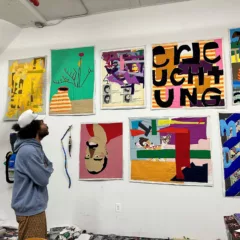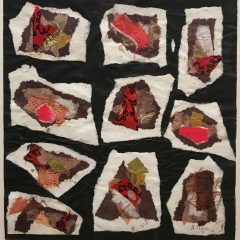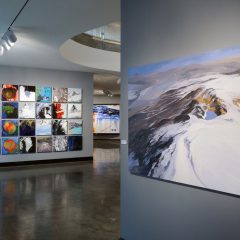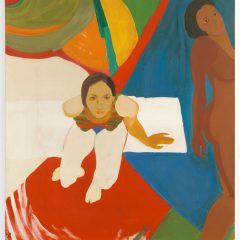Budd Hopkins is an American painter and sculptor born June 15, 1931 in Wheeling, West Virginia. His paintings, sculptures and prints are in the permanent collections of MoMA, the Whitney Museum and the Guggenheim Museum. He’s a pioneer in the field of UFO research (Intruders Foundation) and has written books on the UFO phenomena (Missing Time and Intruders). During our interview, Budd Hopkins repeatedly said to me “Things are as they seem.” With a casual and disturbing ease, these words came from his mouth and fell on the table like dice. My brain rattled from the radical twist (on things) declared in the kitchen of his Chelsea apartment. Budd Hopkins talks about paint, friends, geometry and his alienation from the art world of yesterday.
Corey Armpriester- What is the one quality every artist should possess?
Budd Hopkins- It should end up being emotional communication; you want the work to communicate emotionally.
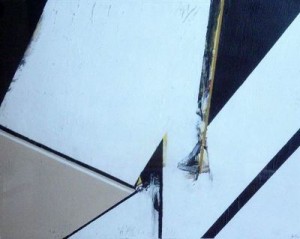
CA- Is the nature of an artist selfish?
BH- Yeah, I think so.
CA- Why was your father opposed to you’re becoming an artist?
BH- My father was very old fashioned man, born in the 19th century, and the idea of an artist meant somebody that was going to be broke all of his life, also weird and outside of society’s rules. It was very natural for him to take that position. If he would have urged me that would have been strange.
CA- You became a regular at the Cedar Tavern in NYC. What did that experience teach you about artists?
BH- Oh god, it taught me about the infinite variety of artists — their personalities were so different. Nobody had money at all, that includes someone like De Kooning. They were all bitter and angry; the art world was just so tiny.
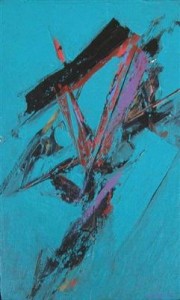
CA- Were you afraid of Jackson Pollock?
BH- I wasn’t really afraid because I was sensible; I avoided him. What would sometimes happen at Cedar was he’d be drunk and make scenes; I think most people avoided him.
CA- You often had lunch with Mark Rothko. Do you know why he took an interest in having you as his long time lunch companion, an unknown 23 year old painter?
BH- First of all it was proximity. He lived around the corner and he would go to this funny little drug store at 6th Ave. and 53rd St. We had met before and I would also go to the same place to eat. I think he liked company and he especially liked the idea that I was a blank slate. He liked the idea of young artists understanding what he was doing.
CA- Robert Motherwell (close friend of Budd) once said to you “All artists are monsters.” Do you know what he meant by saying this?
BH- You raised the question about selfishness earlier, I think that’s what he meant. The way a person can manipulate someone in order to get the work done and have someone support you. I got from the statement that he thought artists are inherently selfish.
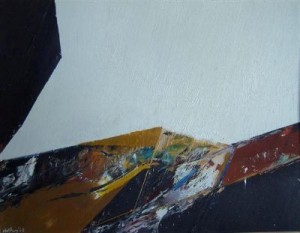
CA- Irwin Edman writer of Arts And The Man, Frank O’Hara art critic and curator for MOMA, Stuart Preston, art critic for The New York Times and Walter Chrysler Jr., well known art collector, all four of these men made sexual advances towards you in the 1950s. Do you think your art career would be different today if you had accepted their advances?
BH- Oh I don’t know, I personally would be in a different place. Those things made me a little bitter.
CA- What is this “life-giving energy” you talk about in relation to Ab-Ex (abstract expressionist) art?
BH- It’s as if the paint is going 60 mph on the canvas and you feel its energy, its movement. There’s no doubt that the energy Ab-Ex art had was to a great extent due to the way the paint was put on.
CA- What does the unfinished circle mean you?
BH- I was giving the work an orientation on the wall. I don’t think there’s anything philosophical about a broken circle.
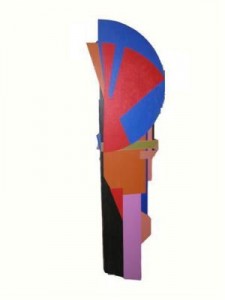
CA- Do you think Ab-Ex art was ushered into the American zeitgeist in order to subvert the rise of political art and artists?
BH- I don’t think that at all. I know that it’s some sort of popular theory in France. I just don’t see any evidence for that.
CA- What changes occurred in your art after the 1964 UFO sighting?
BH- I brought the circle in as a dominate form. The structure of the work became calmer. I wanted something hierarchical; I was trying to establish something that hooks back into classical painting.
CA- Your interest in UFO research (counseling abductees), has it helped or hurt your art career?
BH- I definitely think it hurt. One gallery director’s response to me was “I can’t take him on with all that crazy UFO stuff.”
CA- Who’s the gallery director?
BH- I’d rather not say.
CA- Were you surprised by how conservative the art world was back then?
BH- No.
CA- Is art a uniquely human expression?
BH- Yeah, absolutely. That’s why I have a lot trouble with what’s going on in art right now.
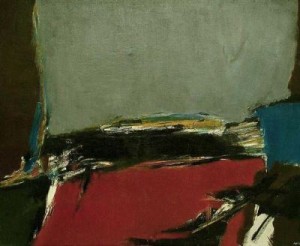
CA- Idea-centric art?
BH- What’s that going to do for me emotionally? That’s why I think in a certain sense the 20th Century ended up being won by Duchamp rather than Picasso. It’s all very clever, but for how long. Emotional expression is far more important.
CA- Is there a Brotherhood within the art world?
BH- I think there might be a brotherhood amongst the dealers, not the artists.
CA- Have you ever worked for the CIA, FBI or NSA?
BH- Absolutely not, absolutely not.
CA- Can you talk about your relationship with New York City?
BH- I love New York City, I can’t imagine being anywhere else.
CA- Thank you Budd.
BH- You’re welcome.
Budd Hopkins’ Memoir is titled Art, Life and UFOs. His art is represented by Levis Fine Art.


